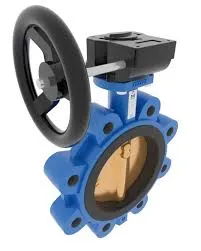డిసెం . 23, 2024 11:49 Back to list
Exploring the Functionality and Applications of Plate Check Valves in Fluid Systems
Understanding Plate Check Valves Functionality and Applications
Plate check valves play a crucial role in various industrial applications by preventing backflow in piping systems. These valves are specifically designed to allow liquid or gas to flow in one direction while preventing reverse flow, which can lead to system failures, inefficiencies, and potential safety hazards.
What is a Plate Check Valve?
A plate check valve is a mechanical device that consists of a valve body and a hinged plate (or disk) that opens and closes in response to the direction of fluid flow. When the fluid flows in the intended direction, the plate swings open, allowing passage. However, if the flow reverses, the plate closes due to gravity or spring tension, effectively sealing the opening and preventing backflow.
Working Principle
The working mechanism of a plate check valve is relatively straightforward. It relies on the pressure differential between the upstream and downstream sides of the valve. Under normal operating conditions, the pressure on the upstream side is greater, keeping the plate open. If the pressure on the downstream side exceeds that of the upstream side, the plate closes, thus blocking the reverse flow. This immediate response ensures that the system retains its integrity and prevents damage caused by backflow.
Advantages of Plate Check Valves
1. Compact Design Plate check valves are typically smaller and lighter than traditional check valves, making them ideal for applications with space constraints.
2. Reliable Operation The simple mechanical design results in dependable performance, effectively mitigating the risk of leaks and failures.
3. Versatility These valves can be used in various applications, including water and wastewater treatment, chemical processing, and oil and gas industries.
plate check valve

Applications
Plate check valves find their application in diverse sectors due to their reliability and efficiency. Some common applications include
- Water Distribution In municipal water systems, plate check valves prevent backflow that can contaminate the clean water supply. They are critical for maintaining water quality and system reliability.
- Wastewater Management In sewage systems, plate check valves help control the flow of waste and prevent back-siphonage, ensuring that wastewater does not re-enter treatment facilities or drinking water systems.
- Chemical Processing In chemical plants, plate check valves prevent the backflow of hazardous substances, protecting equipment and personnel from potential exposure to harmful materials.
- Oil and Gas In the exploration and transportation of oil and gas, plate check valves are integral to preventing reverse flow in pipelines, safeguarding against spills and leaks that can harm the environment.
Conclusion
In summary, plate check valves are essential components in various piping systems, providing vital backflow prevention and ensuring system reliability. Their compact design, coupled with efficient operation and low maintenance needs, makes them a preferred choice in multiple industries. As technology advances, the continued development of plate check valves promises to enhance their performance characteristics, further solidifying their importance in maintaining safe and efficient fluid flow in industrial settings. Understanding the functionality and applications of these valves is crucial for anyone working with fluid systems, ensuring better design and operation for improved safety and efficiency.
Share
-
Reliable Wafer Type Butterfly Valves for Every IndustryNewsJul.25,2025
-
Reliable Flow Control Begins with the Right Ball Check ValveNewsJul.25,2025
-
Precision Flow Control Starts with Quality ValvesNewsJul.25,2025
-
Industrial Flow Control ReliabilityNewsJul.25,2025
-
Engineered for Efficiency Gate Valves That Power Industrial PerformanceNewsJul.25,2025
-
Empowering Infrastructure Through Quality ManufacturingNewsJul.25,2025